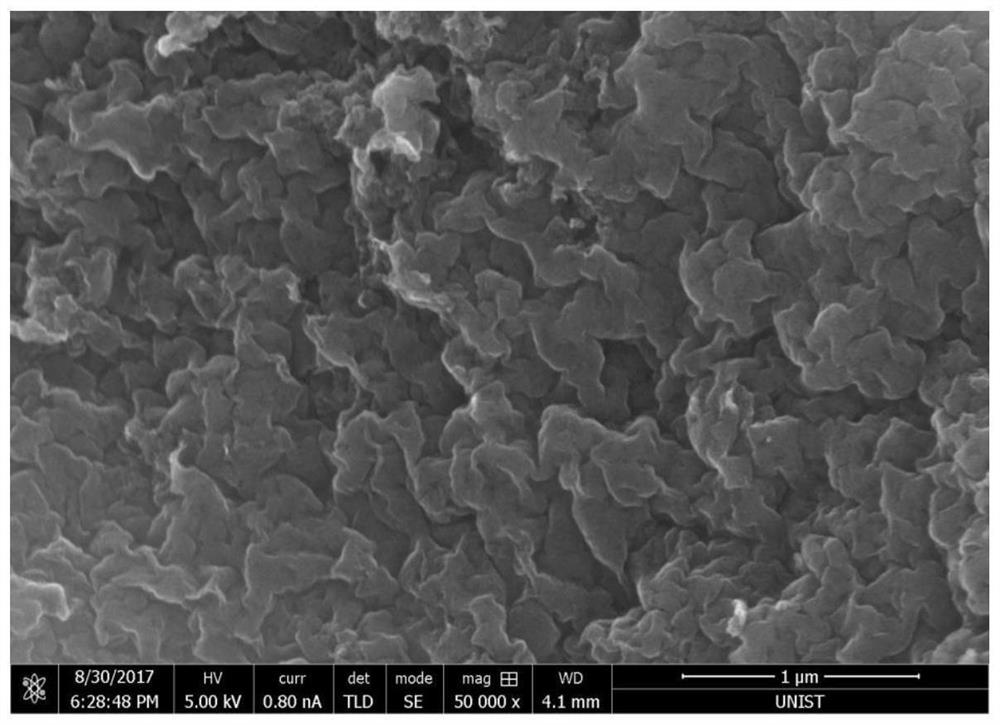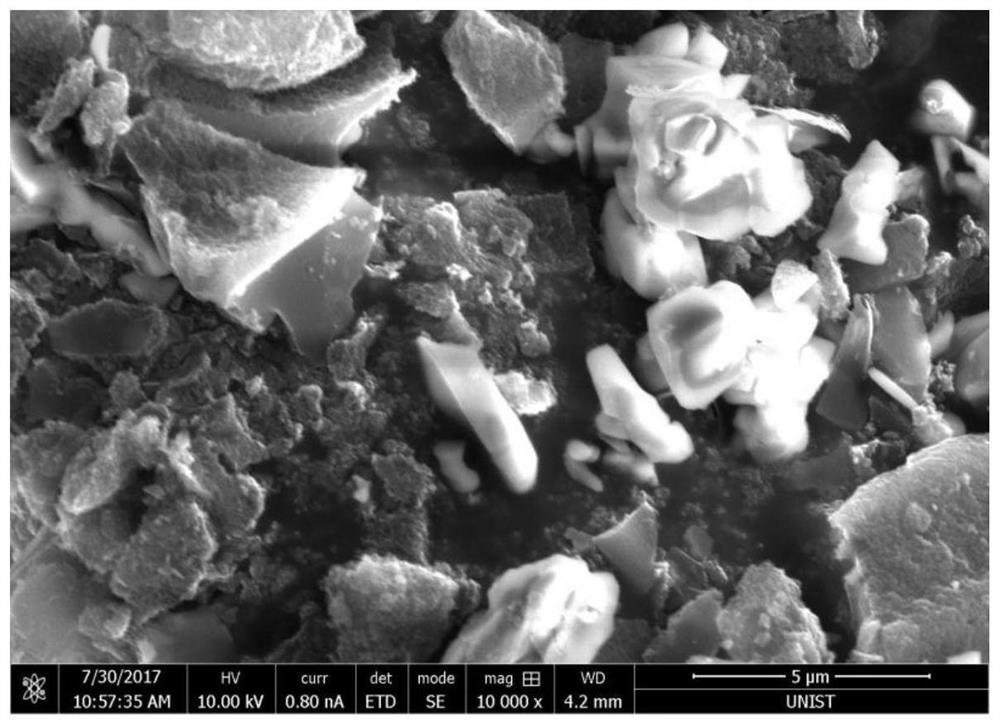A preparation method of a transition metal oxide nitrogen and phosphorus doped catalyst applied to a zinc-air battery
A transition metal, zinc-air battery technology, applied in the direction of fuel cell half-cells and primary battery half-cells, battery electrodes, circuits, etc., can solve the problems of expensive cathode catalysts and limited resources, and achieve benefits for large-scale The effects of large-scale development and utilization, simple preparation process, and excellent oxygen reduction activity
- Summary
- Abstract
- Description
- Claims
- Application Information
AI Technical Summary
Problems solved by technology
Method used
Image
Examples
Embodiment 1
[0033] A method for preparing a transition metal oxide nitrogen and phosphorus doped catalyst applied to a zinc-air battery, specifically comprising the following steps:
[0034] The first step, at room temperature, add 0.25g manganese acetate to quantitative phytic acid and ultrasonically for 20min to dissolve all the metal salts; then add excess acetone to the solution to produce supramolecular compound precipitation, finally pour out the solvent, and wash the supramolecular compound repeatedly with acetone Compound 3 times. In the second step, the supramolecular compound obtained in the first step was transferred to the porcelain boat of the tube furnace, and the temperature was raised to 800°C at a rate of 5°C / min under an argon atmosphere, and then kept at a constant temperature for 2 hours, and finally Cool to room temperature. In the third step, the sample obtained in the previous step is fully ground, transferred to a single-necked flask, added with excess 2M hydrochl...
Embodiment 2
[0036] A method for preparing a transition metal oxide nitrogen and phosphorus doped catalyst applied to a zinc-air battery, specifically comprising the following steps:
[0037] The first step is to add 0.25g of copper acetate to 2ml of phytic acid at room temperature and ultrasonically for 20 minutes to dissolve all the metal salts; then add excess acetone to the solution to produce supramolecular compound precipitation, and finally pour out the solvent and wash the supramolecular compound repeatedly with acetone Compound 3 times. In the second step, the supramolecular compound obtained in the first step was transferred to the porcelain boat of the tube furnace, and the temperature was raised to 800°C at a rate of 5°C / min under an argon atmosphere, and then kept at a constant temperature for 2 hours, and finally Cool to room temperature. The third step is to fully grind the sample obtained in the previous step, transfer it to a single-necked flask, add excess 2M hydrochlori...
Embodiment 3
[0039] A method for preparing a transition metal oxide nitrogen and phosphorus doped catalyst applied to a zinc-air battery, specifically comprising the following steps:
[0040]The first step is to add 0.25g of cobalt acetate to 2ml of phytic acid at room temperature and ultrasonically for 20 minutes to dissolve all metal salts; then add excess acetone to the solution to produce supramolecular compound precipitation, and finally pour out the solvent and wash the supramolecular compound repeatedly with acetone Compound 3 times. In the second step, the supramolecular compound obtained in the first step was transferred to the porcelain boat of the tube furnace, and the temperature was raised to 800°C at a rate of 5°C / min under an argon atmosphere, and then kept at a constant temperature for 2 hours, and finally Cool to room temperature. The third step is to fully grind the sample obtained in the previous step, transfer it to a single-necked flask, add excess 2m hydrochloric aci...
PUM
 Login to View More
Login to View More Abstract
Description
Claims
Application Information
 Login to View More
Login to View More - R&D
- Intellectual Property
- Life Sciences
- Materials
- Tech Scout
- Unparalleled Data Quality
- Higher Quality Content
- 60% Fewer Hallucinations
Browse by: Latest US Patents, China's latest patents, Technical Efficacy Thesaurus, Application Domain, Technology Topic, Popular Technical Reports.
© 2025 PatSnap. All rights reserved.Legal|Privacy policy|Modern Slavery Act Transparency Statement|Sitemap|About US| Contact US: help@patsnap.com



